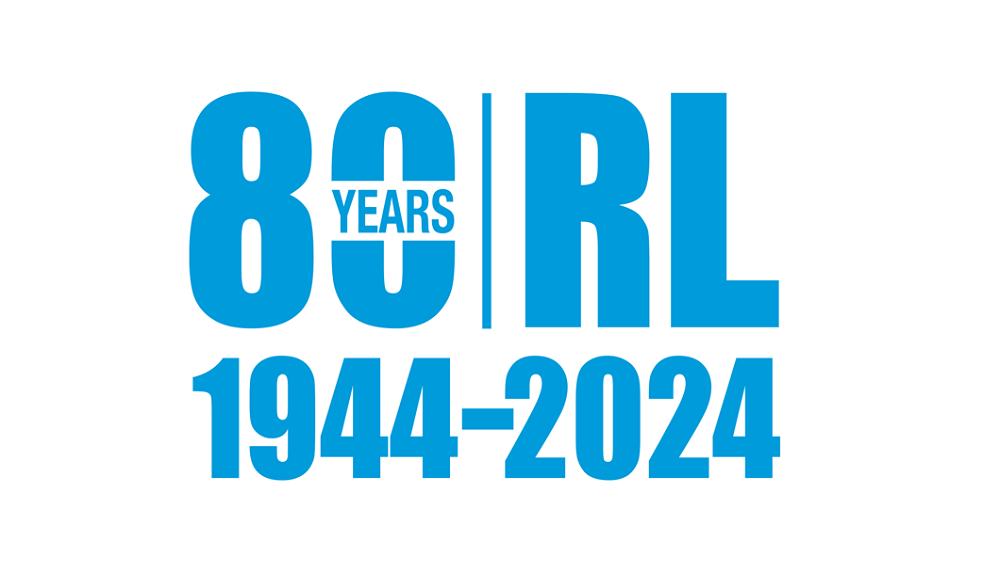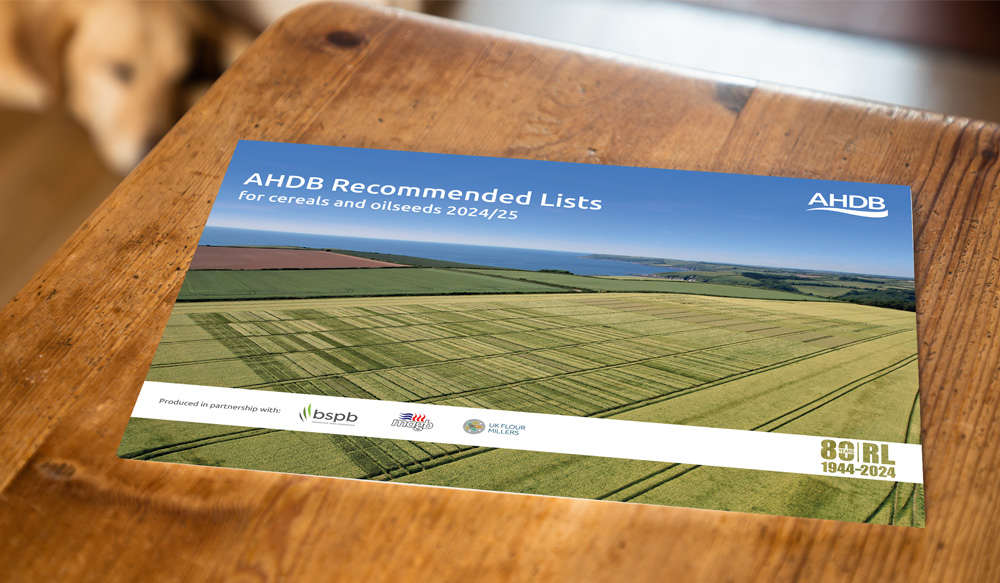RL booklet issued as variety project turns 80
Friday, 12 January 2024
The Recommended Lists for cereal and oilseeds (RL) has entered its eightieth year with the release of the latest variety data in the popular booklet format.
It follows the launch of the RL 2024/25 tables online in November, which featured several eye-catching new variety additions.
The booklet comes with a fresh new look, following feedback from the 2023 RL review, and will be mailed out to subscribers later this month.
The RL’s evolution
The RL has helped farmers make variety decisions for 80 years. It is long-lived, trusted and one of AHDB’s most consistently recognised and valued products. So, it is fitting that an eightieth anniversary is associated with the strong and long-lived oak.
However, the first recommended list, released on 8 August 1944 (by the National Institute of Agricultural Botany, now known as NIAB), was a mere sapling compared to its modern counterpart.
The initial release was limited to 16 winter wheat varieties – four milling varieties, seven biscuit varieties and five others. It also focused on England and Wales, narrative descriptions and quality traits.
However, it was a major milestone. Farmers now had an evidence-based list to help them make sense of the most commercially important varieties among the hundreds of varieties or “so-called varieties” available in the UK*.
Since those early days, the variety trialling project and the world have moved on a long way.
The pace of developments ramped up at the end of World War II. Underpinned by policy, the post-war period saw agriculture relentlessly focus on output. It was a catalyst for improvements in plant genetics and production practices. As a result, the second half of the twentieth century saw large improvements in yield. In 1944, average commercial winter wheat yields were only about 2.5/ha – a long way behind today’s average of about 8.6t/ha.
Almost half a century after the first list, a new variety evaluation scheme was introduced (1991), bringing two notable developments. Firstly, a farmer levy – via the Home Grown Cereals Authority (HGCA) research and development fund – was used to fund the lists. Secondly, the trials were extended to cover the whole of the UK (with the first national data featuring in the 1993 cereal lists).
Ten years later (2001), the responsibility for managing and producing the RL moved from NIAB to HGCA and, subsequently, to AHDB (2008).
Over its lifetime, the RL has grown in scope and depth. It now involves several hundred trials each year, spread from Cornwall to Aberdeenshire, and delivers annually updated variety data for 11 crops in recommended and descriptive lists.
AHDB has committed almost £10 million to the current five-year RL project phase (2021–26). However, the total project cost, which includes cash and in-kind contributions from breeders and processors, is closer to £25 million.
The evolution continues
The latest review of the variety trialling project reconfirmed that the RL is used and highly valued across the cereals and oilseeds sectors. However, it also identified ways to improve it.
For example, users asked for simpler tables. During events in 2023, over 300 farmers and agronomists voted on alternative formats, with 72% opting for the same option. This feedback drove changes to the look and feel of the new RL 2024/25 booklet.
You asked us to avoid splitting variety information over several pages.
In response, we have simplified the variety tables to better connect information. Repetitive information has been stripped out of the tables and added to a handy fold-out key inside the back cover. As a result, data for any variety can now be viewed on a single page.
You told us that pest and disease resistance was the most important variety feature.
In the RL review questionnaire responses, most (88%) rated pest and disease resistance as 4 or 5 for importance (out of 5). In response, we have put agronomic information in a more prominent position (near the top of tables).
You asked us to provide more information about the trials and the recommendation process.
The new booklet has strengthened information about the RL trial system, trial agronomy and the recommendation process. It also features regional maps that show the distribution of the main RL trial sites for winter wheat, winter barley, spring barley and winter oilseed rape.
You asked for verticillium stem stripe disease ratings.
The new edition also continues to respond to the previous RL review in 2018. This review highlighted a need for verticillium stem stripe disease resistance data. With no chemical control options available, this information would be valued by many.
However, when a new trial series is required, it takes many years to design assessment protocols and gather sufficient data. In fact. it took over a decade to assess this challenging disease robustly in trials.
In RL 2024/25, varieties are rated as either susceptible, moderately resistant or intermediate. Those rated as moderately resistant are significantly different to those rated as susceptible. Although data is currently limited for most varieties, data set robustness will improve with successive editions of the RL.
Beyond the booklet
You asked us to strengthen our digital tools.
Following your requests in the 2018 RL review, data is now available in a range of digital tools. Generally, these have been well received. However, you suggested ways to improve them in the latest RL review.
As a first step, we added a comparison feature to the RL app. You can compare up to three varieties side by side in the app’s ‘Compare’ tab.
In addition, we have also released a variety index tool on the RL archive page to help you identify the years when a variety was first and last listed. This will help you find data for old varieties in previous RL editions. The RL archive features all editions since RL 2004/05.
We are also updating tools faster. For example, we now focus on updating the variety selection tools for spring cereals first to help inform planting decisions. The tools for spring barley and spring oats are now based on the latest (RL 2024/25 data), with updates rolling out to the winter crops over the next few months.
With more resource directed towards digital tools, we will no longer produce the summer edition of the RL booklet. Compared to the winter (first) edition, demand for this edition was relatively low.
Our focus on digital resources allows us to respond to new developments. For example, once candidate varieties have been added to the GB and NI Variety Lists (VL), yield and agronomic data can be released rapidly on the AHDB website and the RL app.
Further information
Subscribe to the RL via the Preference Centre
*Note: “So-called varieties” is a direct quote from the opening paragraph in the first recommended list.
 AHDB
AHDB
Can you help direct the RL?
Application deadline is 19 January 2024
We are asking growers, grain traders and (oilseeds) pathologists to consider joining an RL crop committee.
With the team implementing the findings from the latest RL review, it is a fantastic time to be a crop committee member to influence the project’s direction.
There are five vacancies that need to be filled this winter:
- Barley and Oats and Other Cereals Crop Committee vacancies – one grower and two grain traders
- Oilseeds Crop Committee vacancies – one grower and one independent pathologist
Early start for UKCPVS stakeholders
16 January 2024, Cambridgeshire
Targeted at breeders, crop scientists and technical agronomists, the annual UK Cereal Pathogen Virulence Survey (UKCPVS) stakeholder event reports on changes to UK cereal pathogen populations, with a focus on major rust pathogens.
Although mainly used to inform plant-breeding strategies, the project can also guide in-season disease control – which is why we have moved the event from its usual spring slot to a January slot (before disease pressure builds).
The event also features technical papers on breeding for durable resistance to wheat yellow rust and how agronomists exploit UKCPVS data.




